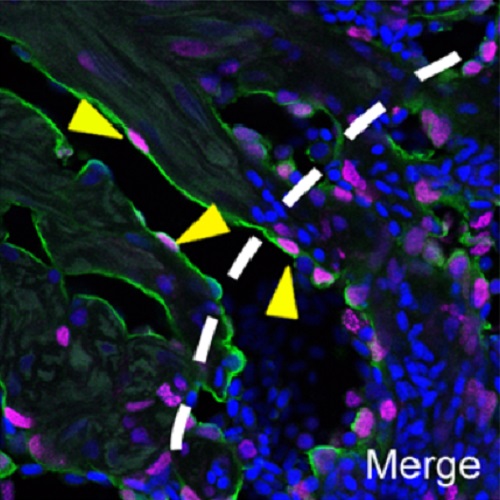Regeneration of cryoinjury induced necrotic heart lesions in zebrafish is associated with epicardial activation and cardiomyocyte proliferation.
In mammals, myocardial cell death due to infarction results in scar formation and little regenerative response. In contrast, zebrafish have a high capacity to regenerate the heart after surgical resection of myocardial tissue. However, whether zebrafish can also regenerate lesions caused by cell death has not been tested. Here, we present a simple method for induction of necrotic lesions in the adult zebrafish heart based on cryoinjury. Despite widespread tissue death and loss of cardiomyocytes caused by these lesions, zebrafish display a robust regenerative response, which results in substantial clearing of the necrotic tissue and little scar formation. The cellular mechanisms underlying regeneration appear to be similar to those activated in response to ventricular resection. In particular, the epicardium activates a developmental gene program, proliferates and covers the lesion. Concomitantly, mature uninjured cardiomyocytes become proliferative and invade the lesion. Our injury model will be a useful tool to study the molecular mechanisms of natural heart regeneration in response to necrotic cell death.

- PLoS ONE 2011 Apr 12;6(4):e18503
- 2011
- Developmental Biology
- 21533269
- PubMed
Enabled by:
